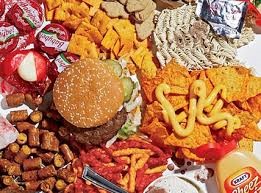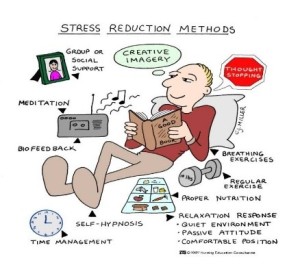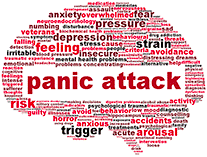Tips for Healthy Eating and Portion Control
 Do you have trouble controlling how much food you eat? When you go to a restaurant or a fast food joint do you overeat or choose foods that are unhealthy for you? Good news, portion control doesn’t mean starving yourself and changing some of foods you eat can be easy. First let us focus on the food offenders and how to replace them.
Do you have trouble controlling how much food you eat? When you go to a restaurant or a fast food joint do you overeat or choose foods that are unhealthy for you? Good news, portion control doesn’t mean starving yourself and changing some of foods you eat can be easy. First let us focus on the food offenders and how to replace them.
Most of our calories come from foods high in fat and sugar. This counts for about 800 calories of our daily intake. The top of the list is cookies, cakes and yeast breads. We also load up on calories in chicken dishes because the chicken is breaded or fried. Sodas, energy and sports drinks, pizza, pasta, tortilla and beef dishes pile on more calories.
Let’s start with including healthy fats in your diet. They keep you feeling fuller longer and allow your body to absorb the vitamins you need. Some of these include avocado, olive oil, coconut oil, nuts and seeds. Bran, whole grains, rice and barley are also full of fiber, vitamins and minerals. The fiber is what helps you feel full longer and low calories. They also keep you bathroom visits regular. Foods that are high in saturated fat/trans fats are foods that stay solid at room temperature. Most of these types of fats are found in butter, coconut oil and animal fats (meat, dairy, bacon and chicken skin). You should try to avoid this type of fat as much as possible and it should only contribute to 10% of your calorie intake.
Next focus on eating whole foods that include protein and healthy fats. Such as fruits, vegetables and lettuce. Add avocado to a salad or a light dressing. This makes you feel fuller. Instead of fatty meats, choose lean. Try to shoot for at least 8 ounces of fish per week. Instead of butter or margarine, use olive oil or olive oil. Try baked goods with whole grains instead of white or refined. Other healthy choices include low-fat dairy food, eggs, beans, and lots of fruit and vegetables. Don’t deprive yourself, you will end of eating more food later in the day. Try and stay away from processed foods. They have chemical additives that make it difficult for us to have just one serving size.
If you want a piece of pizza, choose a thin whole-grain crust. Put vegetables instead of meat. Use a low or fat free cheese, or cut down on the cheese using just a sprinkle. Have one piece and then eat some fruit or vegetables. All of our favorite foods can still be eaten if we just try make better and healthier choices.
Now let us concentrate on eating the right portions. Here are ideas to help you gauge what is too much. If you start downsizing your portions your stomach will too. Learn to “eyeball” your food to gauge what is too much and what is just right. Pick a smaller plate to place your food on. Over the years dinner plates in homes and restaurants have gotten bigger. So the amount of food we put on them is too much which in turn leads to us overeating. Learn to serve the right sized portions.
- Use a smaller plate;
- Don’t go back for seconds;
- Don’t keep food on the table that tempts you; and
- Store leftovers in single-serving containers.
You don’t need to measure or weigh food every time you eat. Instead, keep a mental picture of images you can relate portions too. This will make it easier for you imagine healthy portion sizes. Here are some ideas to give you an idea:
- A portion of pasta is ½ cup = 1/2 a baseball;
- A 1 medium potato = a computer mouse;
- A cup of fruit or vegetables = a fist; and
- A serving of leafy greens = 2 tennis balls;
Do you think that bagels and bran muffins are a healthy choice? They are but they are two to three times larger than a healthy portion. A large bagel can be close to 300 calories. Even a low-fat muffin can pile on 300 calories and if you spread it with butter or cream cheese you have added more fat and calories. Wow your breakfast is a whopping 500 calories or more.
One of the biggest mistakes people make is skipping meals. Always start your day with breakfast. Try something high in protein, you will feel fuller longer. Plan ahead what you eating for lunch. Bring healthy snacks with you, this will help you get through the times before lunch and dinner. Portion control is difficult when you’re starving!
If you have to have a snack, place it in a bowl or on a plate rather than eating out of the bag or container. This will make you more aware of how much you are eating and an easy way to manage your portions.
If portion control is more of an issue when you eat out, have a healthy snack before you leave. Restaurants usually serve enough food for two or three people. So plan on taking part of your meal home. Ask the waiter not to bring you the bread or chips, this makes it less temping for you to eat. Ask for an extra plate to place ½ of the portion to take home. Order one meal and split it with your companion. Don’t feel like you can’t “have it”, just decide what you would enjoy more and make the choice.
Slow down and enjoy your food. Eating fast doesn’t give your stomach time to make you feel full. Eating slower gives your stomach time to register that you are full making you eat less. Remember chew each bite more.
Have a healthy balance of foods each day. Your daily diet should consist of the following:
- 1 ½ to 2 cups of fruit;
- 2 ½ to 3 ½ cups of vegetables;
- 5 to 8 ounces of grain, 1/2 from whole grains;
- 3 cups of nonfat or low-fat dairy foods
- 5 to -6 ½ ounces of meat, beans, and seafood; and
- No more than 5 to 7 teaspoons of oils, mostly from plants, fish, and nuts;
You are not alone, most of us are unaware of the amount of food we consume each day and how unhealthy it is. For more information visit my website: http://NspireHealthyLiving.com.
Mavis Kelley, CHHC, AADP is a Certified Integrative Nutrition Health and Wellness Life Coach specializing in nutrition, health, well-being, fitness and lifestyle design. For more information or to schedule a holistic health assessment, please contact her at: Mavis@nspirehealthyliving.net or visit her website at: http://NspireHealthyLiving.com.








